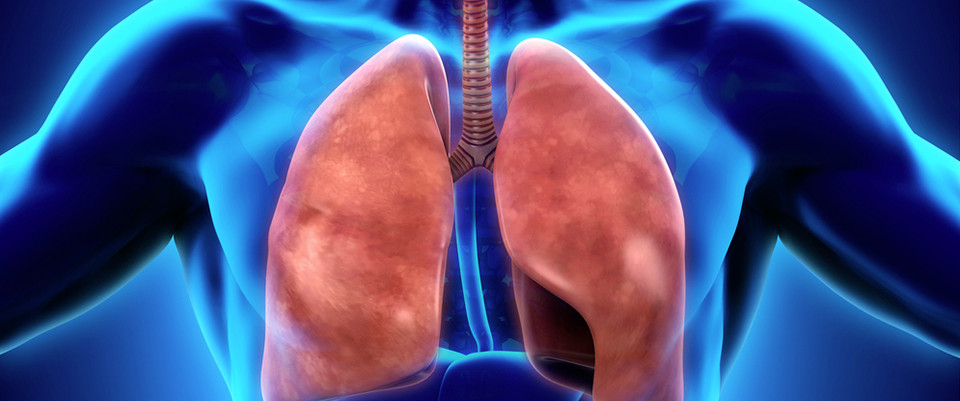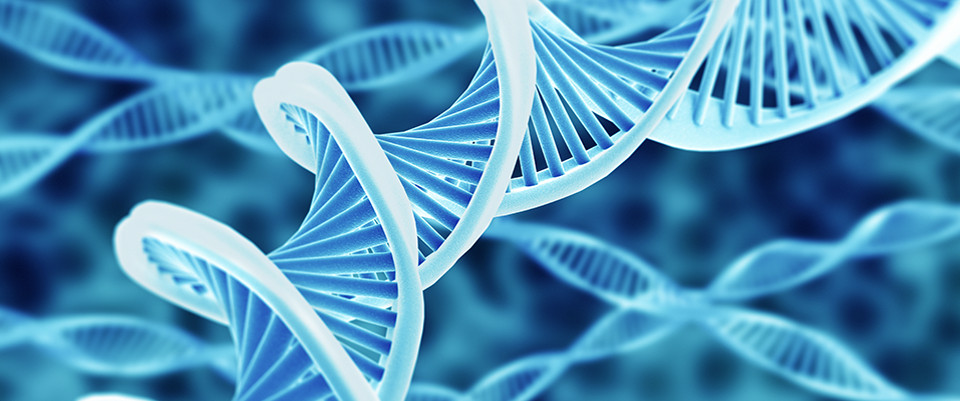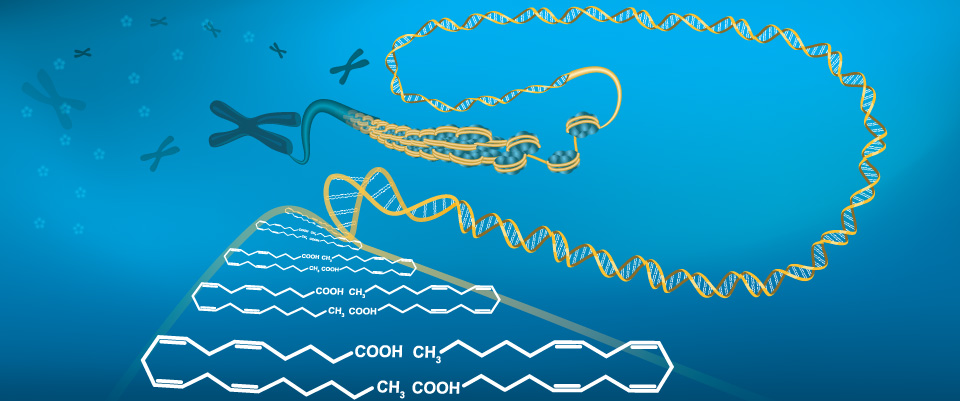PubMed
Cerebrospinal fluid metabolomic profiles can discriminate patients with leptomeningeal carcinomatosis from patients at high risk for leptomeningeal metastasis.
Related Articles
Cerebrospinal fluid metabolomic profiles can discriminate patients with leptomeningeal carcinomatosis from patients at high risk for leptomeningeal metastasis.
Oncotarget. 2017 Nov 24;8(60):101203-101214
Authors: Yoo BC, Lee JH, Kim KH, Lin W, Kim JH, Park JB, Park HJ, Shin SH, Yoo H, Kwon JW, Gwak HS
Abstract
Purpose: Early diagnosis of leptomeningeal carcinomatosis (LMC) is necessary to improve outcomes of this formidable disease. However, cerebrospinal fluid (CSF) cytology is frequently false negative. We examined whether CSF metabolome profiles can be used to differentiate patients with LMC from patients having a risk for development of LMC.
Results: A total of 10,905 LMIs were evaluated using PCA-DA. The LMIs defined Group 2 with a sensitivity of 85% and a specificity of 91%. After selecting 33 LMIs, including diacetylspermine and fibrinogen fragments, the CSF metabolomics profile had a sensitivity of 100% and a specificity of 93% for discriminating Group 1b from the other groups. After selecting 21 LMIs, including phosphatidylcholine, the CSF metabolomics profile differentiated LMC (Group 2) patients from the high-risk groups of Group 3 and Group 4 with 100% sensitivity and 100% specificity.
Materials and Methods: We prospectively collected CSF from five groups of patients: Group 1a, systemic cancer; Group 1b, no tumor; Group 2, LMC; Group 3, brain metastasis; Group 4, brain tumor other than brain metastasis. All metabolites in the CSF samples were detected as low-mass ions (LMIs) using mass spectrometry. Principal component analysis-based discriminant analysis (PCA-DA) and two search algorithms were used to select the LMIs that differentiated the patient groups of interest from controls.
Conclusions: Analysis of CSF metabolite profiles could be used to diagnose LMC and exclude patients at high-risk of LMC with a 100% accuracy. We expect a future validation trial to evaluate CSF metabolic profiles supporting CSF cytology.
PMID: 29254157 [PubMed]
EcoSynther: A Customized Platform To Explore the Biosynthetic Potential in E. coli.
Related Articles
EcoSynther: A Customized Platform To Explore the Biosynthetic Potential in E. coli.
ACS Chem Biol. 2017 Nov 17;12(11):2823-2829
Authors: Ding S, Liao X, Tu W, Wu L, Tian Y, Sun Q, Chen J, Hu QN
Abstract
Developing computational tools for a chassis-centered biosynthetic pathway design is very important for a productive heterologous biosynthesis system by considering enormous foreign biosynthetic reactions. For many cases, a pathway to produce a target molecule consists of both native and heterologous reactions when utilizing a microbial organism as the host organism. Due to tens of thousands of biosynthetic reactions existing in nature, it is not trivial to identify which could be served as heterologous ones to produce the target molecule in a specific organism. In the present work, we integrate more than 10,000 E. coli non-native reactions and utilize a probability-based algorithm to search pathways. Moreover, we built a user-friendly Web server named EcoSynther. It is able to explore the precursors and heterologous reactions needed to produce a target molecule in Escherichia coli K12 MG1655 and then applies flux balance analysis to calculate theoretical yields of each candidate pathway. Compared with other chassis-centered biosynthetic pathway design tools, EcoSynther has two unique features: (1) allow for automatic search without knowing a precursor in E. coli and (2) evaluate the candidate pathways under constraints from E. coli physiological states and growth conditions. EcoSynther is available at http://www.rxnfinder.org/ecosynther/ .
PMID: 28952720 [PubMed - indexed for MEDLINE]
metabolomics; +21 new citations
21 new pubmed citations were retrieved for your search.
Click on the search hyperlink below to display the complete search results:
metabolomics
These pubmed results were generated on 2017/12/19PubMed comprises more than millions of citations for biomedical literature from MEDLINE, life science journals, and online books.
Citations may include links to full-text content from PubMed Central and publisher web sites.
metabolomics; +26 new citations
26 new pubmed citations were retrieved for your search.
Click on the search hyperlink below to display the complete search results:
metabolomics
These pubmed results were generated on 2017/12/19PubMed comprises more than millions of citations for biomedical literature from MEDLINE, life science journals, and online books.
Citations may include links to full-text content from PubMed Central and publisher web sites.
Metabolic responses of Mytilus galloprovincialis to fullerenes in mesocosms exposure experiments.
Related Articles
Metabolic responses of Mytilus galloprovincialis to fullerenes in mesocosms exposure experiments.
Environ Sci Technol. 2017 Dec 15;:
Authors: Sanchís J, Llorca M, Olmos M, Schirinzi GF, Bosch-Orea C, Abad E, Barcelo D, Farre M
Abstract
In this study, Mediterranean mussels (Mytilus galloprovincialis) were exposed through the diet to fullerene soot, at three concentrations in parallel to a control group. Their metabolomics response was assessed by high-performance liquid chromatography coupled to high-resolution mass spectrometry (HPLC-HRMS). The experiments were conducted in marine mesocosms, during 35 days (7 days of acclimatization, 21 days of exposure and 7 seven days of depuration). Real conditions were emulated in terms of physicochemical conditions of the habitat. Results confirmed the bioaccumulation of fullerenes, and the metabolome of the exposed organisms revealed significant differences in the concentrations of seven free amino acids when compared to the control group. An increase in small non-polar amino acids (e.g. alanine) and branched chain amino acids (leucine and isoleucine) were observed. Also, glutamine concentrations decreased significantly, suggesting the activation of facultative anaerobic energy metabolism. Branched chain amino acids, such as leucine and isoleucine, followed the opposite trend after the highest level of exposure, which can imply hormesis effects. Other significant differences were observed on lipids content, such as the general increase of free fatty acids, i.e. long chain fatty acids (lauric, myristic and palmitic acids) when increasing the concentration of exposure. These results were consistent with hypoxia and oxidative stress.
PMID: 29244952 [PubMed - as supplied by publisher]
Proteometabolomic response of Deinococcus radiodurans exposed to UVC and vacuum conditions: Initial studies prior to the Tanpopo space mission.
Related Articles
Proteometabolomic response of Deinococcus radiodurans exposed to UVC and vacuum conditions: Initial studies prior to the Tanpopo space mission.
PLoS One. 2017;12(12):e0189381
Authors: Ott E, Kawaguchi Y, Kölbl D, Chaturvedi P, Nakagawa K, Yamagishi A, Weckwerth W, Milojevic T
Abstract
The multiple extremes resistant bacterium Deinococcus radiodurans is able to withstand harsh conditions of simulated outer space environment. The Tanpopo orbital mission performs a long-term space exposure of D. radiodurans aiming to investigate the possibility of interplanetary transfer of life. The revealing of molecular machinery responsible for survivability of D. radiodurans in the outer space environment can improve our understanding of underlying stress response mechanisms. In this paper, we have evaluated the molecular response of D. radiodurans after the exposure to space-related conditions of UVC irradiation and vacuum. Notably, scanning electron microscopy investigations showed that neither morphology nor cellular integrity of irradiated cells was affected, while integrated proteomic and metabolomic analysis revealed numerous molecular alterations in metabolic and stress response pathways. Several molecular key mechanisms of D. radiodurans, including the tricarboxylic acid cycle, the DNA damage response systems, ROS scavenging systems and transcriptional regulators responded in order to cope with the stressful situation caused by UVC irradiation under vacuum conditions. These results reveal the effectiveness of the integrative proteometabolomic approach as a tool in molecular analysis of microbial stress response caused by space-related factors.
PMID: 29244852 [PubMed - in process]
Antifungal Activity of Ramulus cinnamomi Explored by ¹H-NMR Based Metabolomics Approach.
Related Articles
Antifungal Activity of Ramulus cinnamomi Explored by ¹H-NMR Based Metabolomics Approach.
Molecules. 2017 Dec 15;22(12):
Authors: Wan C, Li P, Chen C, Peng X, Li M, Chen M, Wang J, Chen J
Abstract
A ¹H nuclear magnetic resonance (NMR)-based approach to metabolomics combined bioassay was used to elucidate the antifungal activity of cinnamaldehyde (the main active compound of Ramulus cinnamomi) isolated from Ramulus cinnamomi (RC). Orthogonal signal correction partial least-squares discriminant analysis (OSC-PLS-DA) of NMR data was constructed to analyze all the P. italicum data acquired from the control and treatment groups at 4, 8, and 12 h. Metabolic profiles disclosed metabolic changes that were related to the antifungal effects of cinnamaldehyde against P. italicum including oxidative stress, disorder of energy metabolism, amino acids, and nucleic acids metabolism in treatment group. This integrated metabolomics approach provided an effective way to detect the antifungal effects of cinnamaldehyde against P. italicum dynamically.
PMID: 29244766 [PubMed - in process]
Is it time to abandon fasting for routine lipid testing?
Related Articles
Is it time to abandon fasting for routine lipid testing?
Cleve Clin J Med. 2017 Dec;84(12):919-922
Authors: Farukhi Z, Mora S
PMID: 29244646 [PubMed - in process]
Optimization of CoaD inhibitors against Gram-negative organisms through targeted metabolomics.
Related Articles
Optimization of CoaD inhibitors against Gram-negative organisms through targeted metabolomics.
ACS Infect Dis. 2017 Dec 15;:
Authors: Rath CM, Benton BM, De Vicente J, Drumm JE, Geng M, Li C, Moreau RJ, Shen X, Skepper CK, Steffek M, Takeoka K, Wang L, Wei JR, Xu W, Zhang Q, Feng BY
Abstract
Drug-resistant Gram-negative bacteria are of increasing concern worldwide. Novel antibiotics are needed, but their development is complicated by the requirement to simultaneously optimize molecules for target affinity and cellular potency, which can result in divergent structure-activity relationships (SARs). These challenges were exemplified during our attempts to optimize CoaD inhibitors identified through a biochemical screen. To facilitate lead optimization, we developed mass spectroscopy assays based on the hypothesis that levels of CoA metabolites would reflect the cellular enzymatic activity of CoaD. Using these methods, we were able to detect intracellular enzyme inhibition at compound concentrations up to 100-fold below the minimum inhibitory concentration (MIC), a common metric of growth inhibition. Furthermore, we generated a panel of efflux pump mutants to dissect the susceptibility of a representative CoaD inhibitor to efflux. These data, along with structural and microbiological results presented elsewhere, allowed us to discover the first reported CoaD inhibitors with measurable MICs against wild-type Gram-negative bacteria.
PMID: 29243909 [PubMed - as supplied by publisher]
The 3D OrbiSIMS-label-free metabolic imaging with subcellular lateral resolution and high mass-resolving power.
Related Articles
The 3D OrbiSIMS-label-free metabolic imaging with subcellular lateral resolution and high mass-resolving power.
Nat Methods. 2017 Dec;14(12):1175-1183
Authors: Passarelli MK, Pirkl A, Moellers R, Grinfeld D, Kollmer F, Havelund R, Newman CF, Marshall PS, Arlinghaus H, Alexander MR, West A, Horning S, Niehuis E, Makarov A, Dollery CT, Gilmore IS
Abstract
We report the development of a 3D OrbiSIMS instrument for label-free biomedical imaging. It combines the high spatial resolution of secondary ion mass spectrometry (SIMS; under 200 nm for inorganic species and under 2 μm for biomolecules) with the high mass-resolving power of an Orbitrap (>240,000 at m/z 200). This allows exogenous and endogenous metabolites to be visualized in 3D with subcellular resolution. We imaged the distribution of neurotransmitters-gamma-aminobutyric acid, dopamine and serotonin-with high spectroscopic confidence in the mouse hippocampus. We also putatively annotated and mapped the subcellular localization of 29 sulfoglycosphingolipids and 45 glycerophospholipids, and we confirmed lipid identities with tandem mass spectrometry. We demonstrated single-cell metabolomic profiling using rat alveolar macrophage cells incubated with different concentrations of the drug amiodarone, and we observed that the upregulation of phospholipid species and cholesterol is correlated with the accumulation of amiodarone.
PMID: 29131162 [PubMed - indexed for MEDLINE]
Metabolic Profiling on Alternaria Toxins and Components of Xinjiang Jujubes Incubated with Pathogenic Alternaria alternata and Alternaria tenuissima via Orbitrap High-Resolution Mass Spectrometry.
Related Articles
Metabolic Profiling on Alternaria Toxins and Components of Xinjiang Jujubes Incubated with Pathogenic Alternaria alternata and Alternaria tenuissima via Orbitrap High-Resolution Mass Spectrometry.
J Agric Food Chem. 2017 Sep 27;65(38):8466-8474
Authors: Hu D, Fan Y, Tan Y, Tian Y, Liu N, Wang L, Zhao D, Wang C, Wu A
Abstract
Xinjiang jujubes (Zizyphus rhamnaceae) are important agro-economical foods with the highest planting area and yields in China; however, black spot disease and contaminated Alternaria toxins have unfortunately caused a decline or loss of jujube nutritional quality in recent years. In this study, we used ultrahigh-performance liquid chromatography coupled to Orbitrap high-resolution mass spectrometry to profile both Alternaria toxins and components in three representative Xinjiang jujubes, Hami Huang, Hetian Jun, and Ruoqiang Hui. Before liquid chromatography-mass spectrometry analysis, jujubes were inoculated with two main pathogens of Alternaria alternata (Aa) and Alternaria tenuissima (At). Different combinations of jujube varieties with pathogenic isolates display different metabolic profiles, as expected. Moreover, four major Alternaria toxins, alternariol, alternariol monomethyl ether, altenuene, and tenuazonic acid, were detected in all samples. The inoculation of both pathogens significantly decreased the levels of nutrients and metabolites in jujube, including four saponins, three organic acids, and three alkaloids, whereas it increased the level of several glycerol phosphates. The flavonoid profiles are diverse. Lastly, inoculation of Aa changes more metabolites in jujubes than At. Our data provide insights to better understand the detrimental contamination of Alternaria pathogens in Xinjiang jujubes and improve food safety of jujubes.
PMID: 28882039 [PubMed - indexed for MEDLINE]
Cell culture-based profiling across mammals reveals DNA repair and metabolism as determinants of species longevity.
Related Articles
Cell culture-based profiling across mammals reveals DNA repair and metabolism as determinants of species longevity.
Elife. 2016 Nov 22;5:
Authors: Ma S, Upneja A, Galecki A, Tsai YM, Burant CF, Raskind S, Zhang Q, Zhang ZD, Seluanov A, Gorbunova V, Clish CB, Miller RA, Gladyshev VN
Abstract
Mammalian lifespan differs by >100 fold, but the mechanisms associated with such longevity differences are not understood. Here, we conducted a study on primary skin fibroblasts isolated from 16 species of mammals and maintained under identical cell culture conditions. We developed a pipeline for obtaining species-specific ortholog sequences, profiled gene expression by RNA-seq and small molecules by metabolite profiling, and identified genes and metabolites correlating with species longevity. Cells from longer lived species up-regulated genes involved in DNA repair and glucose metabolism, down-regulated proteolysis and protein transport, and showed high levels of amino acids but low levels of lysophosphatidylcholine and lysophosphatidylethanolamine. The amino acid patterns were recapitulated by further analyses of primate and bird fibroblasts. The study suggests that fibroblast profiling captures differences in longevity across mammals at the level of global gene expression and metabolite levels and reveals pathways that define these differences.
PMID: 27874830 [PubMed - indexed for MEDLINE]
Serum Biomarker Identification by Mass Spectrometry in Acute Aortic Dissection.
Serum Biomarker Identification by Mass Spectrometry in Acute Aortic Dissection.
Cell Physiol Biochem. 2017 Dec 12;44(6):2147-2157
Authors: Ren Y, Tang Q, Liu W, Tang Y, Zhu R, Li B
Abstract
BACKGROUND/AIMS: Aortic dissection (AD) is also known as intramural hematoma. This study aimed to screen peripheral blood biomarkers of small molecule metabolites for AD using high-performance liquid chromatography-mass spectrometry (HPLC-MS).
METHODS: Sera from 25 healthy subjects, 25 patients with well-established AD, and 25 patients with well-established hypertension were investigated by HPLC-MS to detect metabolites, screen differentially expressed metabolites, and analyze metabolic pathways.
RESULTS: Twenty-six and four metabolites were significantly up- and down-regulated in the hypertensive patients compared with the healthy subjects; 165 metabolites were significantly up-regulated and 109 significantly down-regulated in the AD patients compared with the hypertensive patients. Of these metabolites, 35 were up-regulated and 105 down-regulated only in AD patients. The metabolites that were differentially expressed in AD are mainly involved in tryptophan, histidine, glycerophospholipid, ether lipid, and choline metabolic pathways. As AD alters the peripheral blood metabolome, analysis of peripheral blood metabolites can be used in auxiliary diagnosis of AD.
CONCLUSION: Eight metabolites are potential biomarkers for AD, 3 of which were differentially expressed and can be used for auxiliary diagnosis of AD and evaluation of treatment effectiveness.
PMID: 29241182 [PubMed - as supplied by publisher]
Integrating transcriptomics and metabolomics to characterize the regulation of EPA biosynthesis in response to cold stress in seaweed Bangia fuscopurpurea.
Integrating transcriptomics and metabolomics to characterize the regulation of EPA biosynthesis in response to cold stress in seaweed Bangia fuscopurpurea.
PLoS One. 2017;12(12):e0186986
Authors: Cao M, Wang D, Mao Y, Kong F, Bi G, Xing Q, Weng Z
Abstract
Bangia fuscopurpurea is a traditional mariculture crop having high nutritional value, eicosapntemacnioc acid (EPA) production, and protein content. As an intertidal species, it can tolerate drastic changes in abiotic factors such as temperature, hydration, and light radiation; however, genomic information on the evolutionary aspect and mechanism of EPA enrichment in B. fuscopurpurea and the role of EPA in cold tolerance in this species remain elusive. We conducted transcriptome profile analysis in B. fuscopurpurea to investigate the biological functions of genes associated with resistance to various environment factors. We identified 41,935 unigenes that were assembled and applied to public databases to define their functional annotation (NR, GO, KEGG, KOG, and SwissProt). We further identified genes that encoded key enzymes in EPA biosynthesis; five paralogous genes encoding delta5 desaturase were detected in B. fuscopurpurea. Fatty acid profiling and gene expression analysis of B. fuscopurpurea grown under cold stress were simultaneously performed. The EPA content was increased by 29.8% in the samples grown at 4°C, while the total amount of fatty acids remained unchanged. Moreover, all the EPA biosynthesis-related desaturase and elongase genes were upregulated under cold stress. Thus, we hypothesized that diverse EPA biosynthesis pathways and significant increase in gene copy numbers of fatty acid desaturases, together with the concomitant elevation in the transcriptional level of genes associated with fatty acid metabolism, lead to EPA accumulation and subsequently affect membrane fluidity, contributing to cold stress resistance in B. fuscopurpurea. Our findings not only provide a fundamental genetic background for further research in B. fuscopurpurea, but also have important implications for screening and genetic engineering of algae and plants for EPA production.
PMID: 29240755 [PubMed - in process]
Metabolic Profile of Ex Vivo Lung Perfusate Yields Biomarkers for Lung Transplant Outcomes.
Metabolic Profile of Ex Vivo Lung Perfusate Yields Biomarkers for Lung Transplant Outcomes.
Ann Surg. 2018 Jan;267(1):196-197
Authors: Hsin MK, Zamel R, Cypel M, Wishart D, Han B, Keshavjee S, Liu M
Abstract
OBJECTIVE: To identify potential biomarkers during ex vivo lung perfusion (EVLP) using metabolomics approach.
SUMMARY BACKGROUND DATA: EVLP increases the number of usable donor lungs for lung transplantation (LTx) by physiologic assessment of explanted marginal lungs. The underlying paradigm of EVLP is the normothermic perfusion of cadaveric lungs previously flushed and stored in hypothermic preservation fluid, which allows the resumption of active cellular metabolism and respiratory function. Metabolomics of EVLP perfusate may identify metabolic profiles of donor lungs associated with early LTx outcomes.
METHODS: EVLP perfusate taken at 1and 4 hperfusion were collected from 50 clinical EVLP cases, and submitted to untargeted metabolic profiling with mass spectrometry. The findings were correlated with early LTx outcomes.
RESULTS: Following EVLP, 7 cases were declined for LTx. In the remaining transplanted cases, 9 cases developed primary graft dysfunction (PGD) 3. For the metabolic profile at EVLP-1h, a logistic regression model based on palmitoyl-sphingomyelin, 5-aminovalerate, and decanoylcarnitine yielded a receiver operating characteristic (ROC) curve with an area under the curve (AUC) of 0.987 in differentiating PGD 3 from Non-PGD 3 outcomes. For the metabolic profile at EVLP-4h, a logistic regression model based on N2-methylguanosine, 5-aminovalerate, oleamide, and decanoylcarnitine yielded a ROC curve with AUC 0.985 in differentiating PGD 3 from non-PGD 3 outcomes.
CONCLUSIONS: Metabolomics of EVLP perfusate revealed a small panel of metabolites highly correlated with early LTx outcomes, and may be potential biomarkers that can improve selection of marginal lungs on EVLP. Further validation studies are needed to confirm these findings.
PMID: 29240608 [PubMed - in process]
Serum and plasma amino acids as markers of prediabetes, insulin resistance, and incident diabetes.
Serum and plasma amino acids as markers of prediabetes, insulin resistance, and incident diabetes.
Crit Rev Clin Lab Sci. 2017 Dec 14;:1-12
Authors: Gar C, Rottenkolber M, Prehn C, Adamski J, Seissler J, Lechner A
Abstract
Presently, routine screening misses many cases of prediabetes and early type 2 diabetes (T2D). Therefore, better biomarkers are needed for a simple and early detection of abnormalities of glucose metabolism and prediction of future T2D. Possible candidates for this include plasma or serum amino acids because glucose and amino acid metabolism are closely connected. This review presents the available evidence of this connectivity and discusses its clinical implications. First, we examine the underlying physiological, pre-analytical, and analytical issues. Then, we summarize results of human studies that evaluate amino acid levels as markers for insulin resistance, prediabetes, and future incident T2D. Finally, we illustrate the interconnection of amino acid levels and metabolic syndrome with our own data from a deeply phenotyped human cohort. We also discuss how amino acids may contribute to the pathophysiology of T2D. We conclude that elevated branched-chain amino acids and reduced glycine are currently the most robust and consistent amino acid markers for prediabetes, insulin resistance, and future T2D. Yet, we are cautious regarding the clinical potential even of these parameters because their discriminatory power is insufficient and their levels depend not only on glycemia, but also on other components of the metabolic syndrome. The identification of more precise intermediates of amino acid metabolism or combinations with other biomarkers will, therefore, be necessary to obtain in order to develop laboratory tests that can improve T2D screening.
PMID: 29239245 [PubMed - as supplied by publisher]
Best-matched internal standard normalization in liquid chromatography-mass spectrometry metabolomics applied to environmental samples.
Best-matched internal standard normalization in liquid chromatography-mass spectrometry metabolomics applied to environmental samples.
Anal Chem. 2017 Dec 14;:
Authors: Boysen AK, Heal KR, Carlson LT, Ingalls AE
Abstract
The goal of metabolomics is to measure the entire range of small organic molecules in biological samples. In liquid chromatography-mass spectrometry-based metabolomics, formidable analytical challenges remain in removing the non-biological factors that affect chromatographic peak areas. These factors include sample matrix-induced ion suppression, chromatographic quality, and analytical drift. The combination of these factors is referred to as obscuring variation. Some metabolomics samples can exhibit intense obscuring variation due to matrix-induced ion suppression, rendering large amounts of data unreliable and difficult to interpret. Existing normalization techniques have limited applicability to these sample types. Here we present a data normalization method to minimize the effects of obscuring variation. We normalize peak areas using a batch-specific normalization process, which matches measured metabolites with isotope-labeled internal standards that behave similarly during the analysis. This method, called best-matched internal standard (B-MIS) normalization, can be applied to targeted or untargeted metabolomics datasets and yields relative concentrations. We evaluate and demonstrate the utility of B-MIS normalization using marine environmental samples and laboratory grown cultures of phytoplankton. In untargeted analyses, B-MIS normalization allowed for inclusion of mass features in downstream analyses that would have been considered unreliable without normalization due to obscuring variation. B-MIS normalization for targeted or untargeted metabolomics is freely available at https://github.com/IngallsLabUW/B-MIS-normalization.
PMID: 29239170 [PubMed - as supplied by publisher]
Translational systems pharmacology studies in pregnant women.
Related Articles
Translational systems pharmacology studies in pregnant women.
CPT Pharmacometrics Syst Pharmacol. 2017 Dec 14;:
Authors: Quinney SK, Gullapelli R, Haas DM
Abstract
Pregnancy involves rapid physiological adaptation and complex interplay between mother and fetus. New analytic technologies provide large amounts of genomic, proteomic, and metabolomics data. The integration of these data through bioinformatics, statistical, and systems pharmacology techniques can improve our understanding of the mechanisms of normal maternal physiologic changes and fetal development. New insights into the mechanisms of pregnancy-related disorders, such as preterm birth (PTB), may lead to the development of new therapeutic interventions and novel biomarkers.
PMID: 29239132 [PubMed - as supplied by publisher]
13C-assisted metabolic flux analysis to investigate heterotrophic and mixotrophic metabolism in Cupriavidus necator H16.
Related Articles
13C-assisted metabolic flux analysis to investigate heterotrophic and mixotrophic metabolism in Cupriavidus necator H16.
Metabolomics. 2018;14(1):9
Authors: Alagesan S, Minton NP, Malys N
Abstract
Introduction: Cupriavidus necator H16 is a gram-negative bacterium, capable of lithoautotrophic growth by utilizing hydrogen as an energy source and fixing carbon dioxide (CO2) through Calvin-Benson-Bassham (CBB) cycle. The potential to utilize synthesis gas (Syngas) and the prospects of rerouting carbon from polyhydroxybutyrate synthesis to value-added compounds makes C. necator an excellent chassis for industrial application.
Objectives: In the context of lack of sufficient quantitative information of the metabolic pathways and to advance in rational metabolic engineering for optimized product synthesis in C. necator H16, we carried out a metabolic flux analysis based on steady-state 13C-labelling.
Methods: In this study, steady-state carbon labelling experiments, using either d-[1-13C]fructose or [1,2-13C]glycerol, were undertaken to investigate the carbon flux through the central carbon metabolism in C. necator H16 under heterotrophic and mixotrophic growth conditions, respectively.
Results: We found that the CBB cycle is active even under heterotrophic condition, and growth is indeed mixotrophic. While Entner-Doudoroff (ED) pathway is shown to be the major route for sugar degradation, tricarboxylic acid (TCA) cycle is highly active in mixotrophic condition. Enhanced flux is observed in reductive pentose phosphate pathway (redPPP) under the mixotrophic condition to supplement the precursor requirement for CBB cycle. The flux distribution was compared to the mRNA abundance of genes encoding enzymes involved in key enzymatic reactions of the central carbon metabolism.
Conclusion: This study leads the way to establishing 13C-based quantitative fluxomics for rational pathway engineering in C. necator H16.
PMID: 29238275 [PubMed]
Metabolic Profiling of Adiponectin Levels in Adults: Mendelian Randomization Analysis.
Related Articles
Metabolic Profiling of Adiponectin Levels in Adults: Mendelian Randomization Analysis.
Circ Cardiovasc Genet. 2017 Dec;10(6):
Authors: Borges MC, Barros AJD, Ferreira DLS, Casas JP, Horta BL, Kivimaki M, Kumari M, Menon U, Gaunt TR, Ben-Shlomo Y, Freitas DF, Oliveira IO, Gentry-Maharaj A, Fourkala E, Lawlor DA, Hingorani AD
Abstract
BACKGROUND: Adiponectin, a circulating adipocyte-derived protein, has insulin-sensitizing, anti-inflammatory, antiatherogenic, and cardiomyocyte-protective properties in animal models. However, the systemic effects of adiponectin in humans are unknown. Our aims were to define the metabolic profile associated with higher blood adiponectin concentration and investigate whether variation in adiponectin concentration affects the systemic metabolic profile.
METHODS AND RESULTS: We applied multivariable regression in ≤5909 adults and Mendelian randomization (using cis-acting genetic variants in the vicinity of the adiponectin gene as instrumental variables) for analyzing the causal effect of adiponectin in the metabolic profile of ≤37 545 adults. Participants were largely European from 6 longitudinal studies and 1 genome-wide association consortium. In the multivariable regression analyses, higher circulating adiponectin was associated with higher high-density lipoprotein lipids and lower very-low-density lipoprotein lipids, glucose levels, branched-chain amino acids, and inflammatory markers. However, these findings were not supported by Mendelian randomization analyses for most metabolites. Findings were consistent between sexes and after excluding high-risk groups (defined by age and occurrence of previous cardiovascular event) and 1 study with admixed population.
CONCLUSIONS: Our findings indicate that blood adiponectin concentration is more likely to be an epiphenomenon in the context of metabolic disease than a key determinant.
PMID: 29237687 [PubMed - in process]











